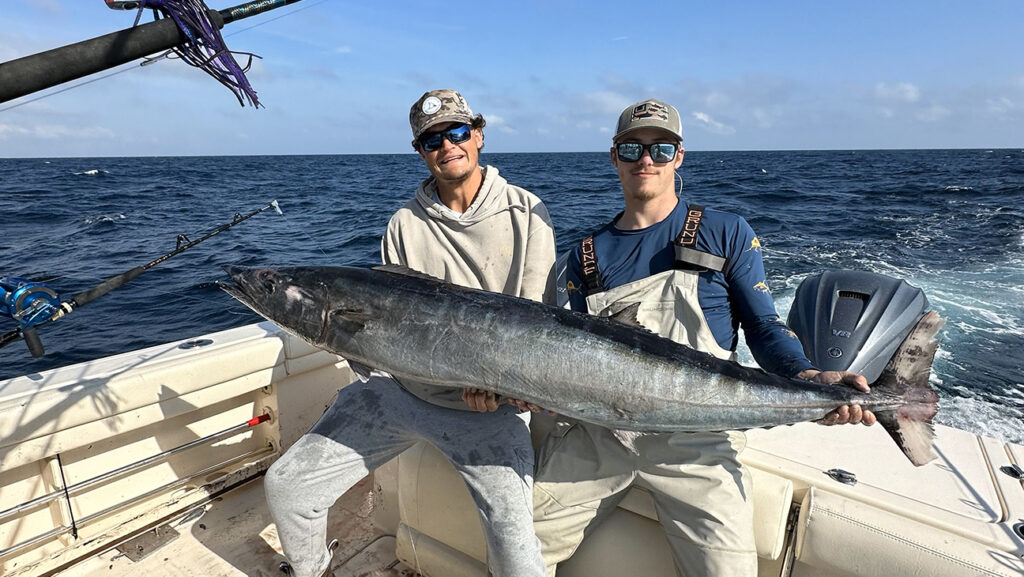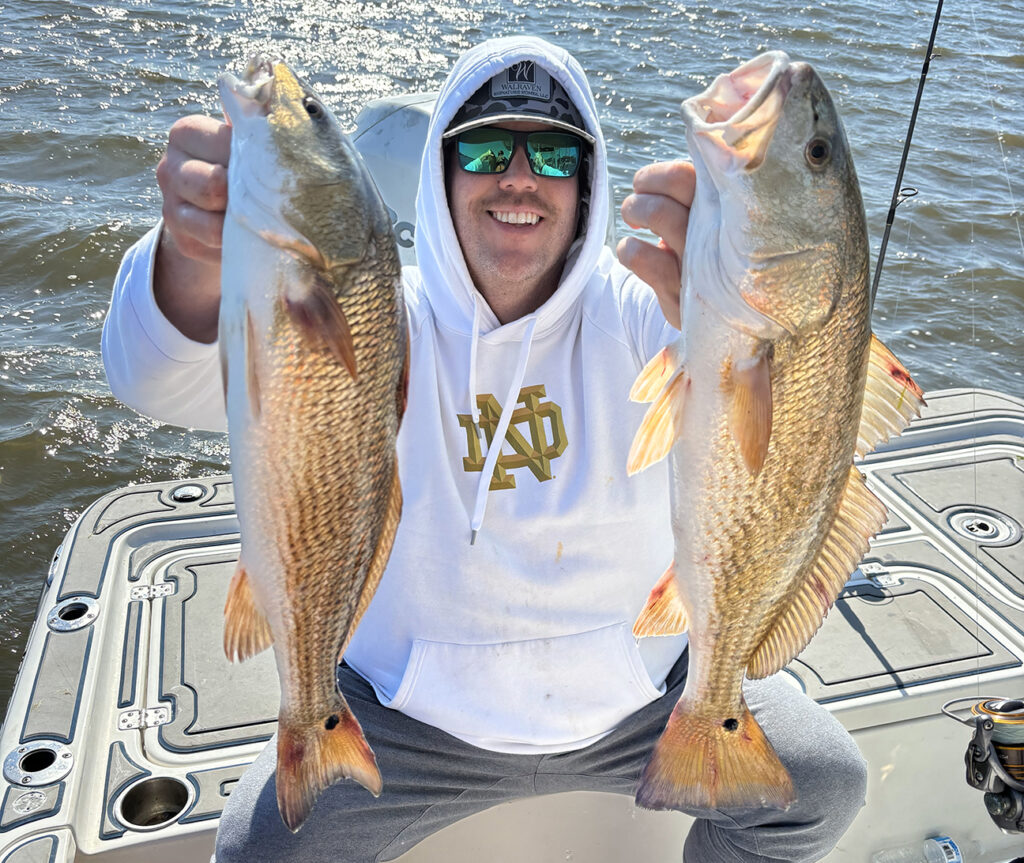Ocean Isle/Holden Beach – April 2025
Jeff, of Ocean Isle Fishing Center, reports that anglers are finding good numbers of slot red drum by fishing natural baits, such as shrimp or live mud minnows, around ICW docks and oyster rocks.
A bunch of keeper black drum have been showing up in the action, and they’re feeding on dead shrimp.
Anglers still await the big push of whiting into the area, though a few scattered catches already are a likely signal that it could turn on any day.
A few speckled trout are being caught with live mud minnows, but the trout mostly remain in their wintering holes in the backs of mainland creeks.
Brant, of Ocean Isle Fishing Center, reports that March has always been one of the hardest months to really produce fish. Year after year, the numbers show that it falls in a gap, with species either just out of season or still yet to arrive.
Out along the break, water temperatures are on the cooler side, and fishing efforts are mostly producing scattered blackfin tuna and wahoo.
If wanting to load up on meat, black sea bass seem to be the most reliable. This bite is still stacked up on the shallower structure (60’+).
Tim, of Tideline Charters, reports that red drum are holding pretty shallow, anywhere from less than 1’ to 3-4’. Dock fishing in the creeks is still having a lot of success, with anglers mostly throwing smaller soft plastics or live mud minnows on a jig head.
Small pogies are starting to show up in the waterway, and in the coming weeks, this leads to those schools of reds breaking up and scattering around. With warming water temperatures, these reds will have more active feeding patterns, and this activity paired with fish spreading out throughout the inland waters will make the bite much better.
Black drum are schooled up well around these same docks, and they’re hitting shrimp.
Floating live shrimp out at the jetties has been producing speckled trout and red drum. The right conditions are necessary out at the jetties, but this tactic of floating shrimp often produces some of the larger trout of the year.

Jay Hollow and Charlie Truby, of Greensboro, NC, landed this 60.1 lb., 62″ wahoo near the Steeples trolling ballyhoo.
Tripp, of Capt’n Hook Outdoors, reports that offshore anglers who find a chance to run to the Gulf Stream are catching some wahoo and blackfin tuna.
Making a stop at the deeper bottom areas (80-100’+) is producing vermilion snapper and jumbo black sea bass. The black sea bass, in particular, can be found shallow in these cooler months, but more consistent keeper numbers will come from the deeper, less targeted rocks and ledges.
Inshore anglers remain focused on the red and black drum action. Both species are still in the winter patterns of schooling up and holding closer to structure, and some dead shrimp will entice bites. The bite for both improves as more bait starts moving around and these fish begin to split out into smaller groups and scatter throughout the waterway.
Sheepshead are another good target in April, as more fish will be pushing back inshore and staging up around the deeper hard structures, such as ICW docks or rocks.
Todd, of Rigged and Ready Charters, reports that not much has really changed offshore over the past month, with colder water still out in the Gulf Stream. Anglers making the run are having some success catching both wahoo and blackfin tuna.
Bottom fishing has been the best producing trips, with good-sized black sea bass anywhere in the 10+ mile area.
Anglers inside are starting to see some large whiting showing up in deeper areas along the waterway out to the inlet.
Anthony, of Salt Fever Guide Service, reports that offshore fishing has been pretty tough, with a mix of both green-colored water and colder water temperatures (66-67 degrees) out at the break. Despite these factors, boats have still been able to get on some of the larger springtime blackfin tuna (to 30 lbs.) by downsizing the skirted ballyhoo offerings.
A couple smaller wahoo (25-35 lbs.) are mixed in the action.
Bottom fishing for larger black sea bass (to 4 lbs.) has been really good in the 65-85’ area.
On the deeper side of that range, anglers are seeing a few vermilion snapper in the mix.
Moving into April, the Gulf Stream water temperatures should start to move up significantly, and good-sized blackfin tuna and wahoo will be around.

John Lotus, of Charlotte, doubled up on these red drum while fishing mud minnows on jig heads near docks in the ICW. He was fishing in the Ocean Isle area with Capt. Tripp Hooks of Capt’n Hook Outdoors.
Philip, of Rod and Reel Shop, reports that anglers are seeing some whiting show up in the deeper holes from the inlet to areas back towards the waterway.
Red drum on the inside are a bit scattered, and they are mostly holding in the same winter patterns.
The speckled trout action has been even more modest, with the specks still holding in the backs of creeks and canals.
Sheepshead and black drum catches are picking up around the structured areas. This action should only get better as more of these fish push inside.
Out in the surf, anglers are starting to see some whiting, with black drum mixed in. Cut shrimp will entice bites from either species.
Jerry, of Ocean Isle Beach Fishing Pier, reports that anglers are having success catching a mix of smaller whiting and croaker.
